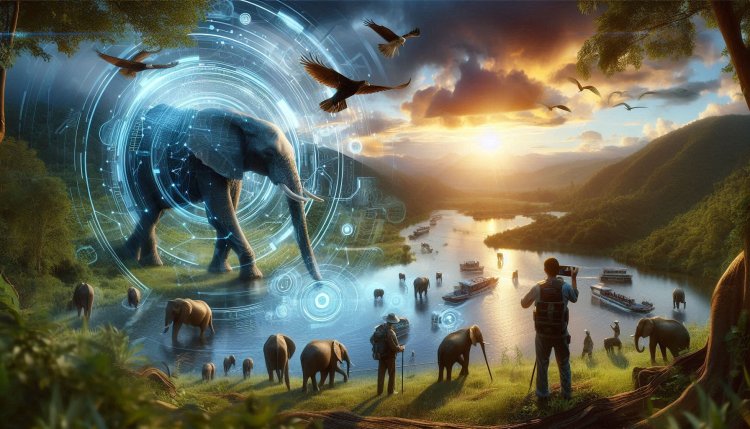AI in environmental monitoring: Wildlife tracking and conservation
Discover how AI is revolutionizing wildlife tracking and conservation efforts through advanced monitoring techniques. Learn more about the impact of AI in environmental conservation.

AI in Environmental Monitoring: Wildlife Tracking and Conservation
Artificial Intelligence (AI) has revolutionized environmental monitoring, especially in the field of wildlife tracking and conservation. AI technologies are being increasingly used to collect, analyze, and interpret data to better understand and protect wildlife populations and their habitats.
1. Tracking Wildlife
One of the key applications of AI in wildlife conservation is tracking animals in their natural habitats. AI-powered camera traps and drones can autonomously capture images and videos of wildlife, allowing researchers to monitor species populations, behavior, and movements without human intervention. Machine learning algorithms can analyze these images to identify individual animals, track their movements, and even estimate population sizes.
2. Anti-Poaching Efforts
AI is also being used to combat wildlife poaching by detecting and alerting authorities to suspicious activities in protected areas. AI algorithms can analyze data from various sources, such as satellite imagery, acoustic sensors, and camera traps, to identify potential threats to wildlife, such as poachers or illegal logging activities. This real-time monitoring enables rapid response to protect endangered species.
3. Habitat Monitoring
AI technologies are helping conservationists monitor and analyze changes in wildlife habitats, such as deforestation, land use changes, and climate impacts. By processing large amounts of satellite imagery and sensor data, AI can provide insights into habitat loss, fragmentation, and degradation, helping prioritize conservation efforts and land management strategies.
4. Species Identification
AI-based tools are increasingly being used for species identification, especially in cases where traditional methods are time-consuming or error-prone. Machine learning models can analyze sounds, images, and genetic data to accurately identify species, including endangered and elusive animals. This information is crucial for biodiversity assessments and conservation planning.
5. Data Analysis and Prediction
AI algorithms can analyze vast amounts of ecological data to identify patterns, trends, and anomalies that may not be apparent to human researchers. By processing data on wildlife populations, environmental conditions, and human activities, AI can help predict species distributions, population dynamics, and the impact of climate change on ecosystems.
6. Conservation Planning
AI tools are increasingly used to optimize conservation planning by analyzing complex data sets and generating actionable insights. Machine learning algorithms can help identify priority areas for conservation, design wildlife corridors, and assess the effectiveness of conservation interventions. This data-driven approach enables more efficient and targeted conservation efforts.
7. Challenges and Ethical Considerations
While AI offers great potential for wildlife tracking and conservation, there are also challenges and ethical considerations to be addressed. These include issues related to data privacy, algorithm bias, and the potential misuse of AI technologies for surveillance or control purposes. It is important for researchers and policymakers to consider these ethical implications and ensure that AI is used responsibly in environmental monitoring.
8. Conclusion
AI technologies have the potential to revolutionize wildlife tracking and conservation by providing innovative solutions to complex environmental challenges. By leveraging AI for data collection, analysis, and prediction, researchers and conservationists can gain valuable insights into wildlife populations and their habitats, leading to more effective conservation strategies and better protection of biodiversity.
What's Your Reaction?

















